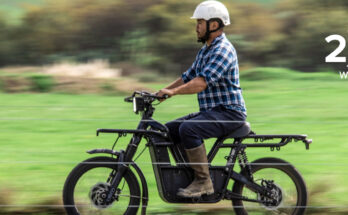Derailleur vs. Three-Speed Internal Cog
Offroad cycling is freedom. You can enjoy cycling anywhere anytime, it serves you in many ways.
It gives you a sort of cleansing both mentally and health-wise.
Your choice of the right bicycle is paramount. This article is intended to help you know about the two main cycling mechanism; derailleur versus a three-speed internal hub.
Let’s ride.
The Difference Between Derailleur and Three-Speed Internal Cog Mechanisms
Following is a brief on how each type is built and the main attributes of both.
Three-Speed Gear Hub “IGH”
This bicycle’s mechanism is based upon an internal sealed-gear system within an enclosed unit that holds the three-speed cogs along with the shifting mechanism for the bicycle. All you see is the single chain or belt spawning from the front wheel to the back one, with a low risk of damage.
The sealed hub unit is a great advantage as it’ll stand the test of elements, rain, snow, sand, dirt, and other conditions. The enclosed parts will be shielded and prevent damage to all moving parts.
One of the main differences between IGH and derailleur is that with IGH you can shift gears without having to be peddling as you do in a derailleur mechanism. This feature alleviates any stress on your knees and gives you freedom while cycling.
The IGH mechanism enables you to shift multiple gears at once, you don’t need to go one gear shift at a time.
It’s a low maintenance bicycle. This is the main reason you might opt to have an IGH bike. You need not worry about shifting gears, it’s done by clicking on a trigger with your finger while pedaling or even when you’re stationary.
You need to change the oil in the hub maybe once a year, and just make sure that the right tension of the chain or belt is maintained.
Forget about frequent adjustments, cleaning, or cogs and chain replacement, a yearly full check is all you need normally.
It’s very durable. As the chain within an IGH is always on the same gears, it runs in a straight line keeping wear and tear to a minimum lasting for a much longer time.
IGH has the option of using belt drives, which are more practical, and has fewer drawbacks than normal steel chains. They’re clean, quiet, and lightweight. No lubricants or degreasers are needed, again hassle-free rides.
Such a bicycle is preferred for city commutes, countryside excursions, and entertaining rides. It’s not for professional racing. It has a steep price range.
Derailleur
This bicycle mechanism is built to be a simple straightforward external gear set. All the parts are apparent and exposed. This mechanism is suitable for users who look for racing as the main goal. They’re standard all around the world.
The mechanism makes use of every joule of energy you exert and transforms it to speed. The availability of many gears gives you the freedom to choose the exact speed required according to the terrain.
As the gear system is exposed, it’s affected by the elements and has a high risk of damage from bumps and scratches in the offroad environment.
You can’t shift gears while you’re stationary, you’ve to be pedaling. You’ve to shift gears one after one, you can’t skip gears if you do so, the chain will drop causing downtime.
It’s the choice for professional and recreational racing events. It has an affordable price tag as it’s considered the standard cycling mechanism so far.
Now let’s give a brief on the pros and cons of each type
Three-Speed Internal Cog Pros
- Little to No learning Curve
- Low Maintenance
- Durability
- Reliable Mechanism
Three-Speed Internal Cog Cons
- Efficiency, the hub has size restrictions, thus the number of gears usually is three, and this affects the speed capability in comparison to the derailleur mechanism that has many more gears
- Spare parts availability and complexity of repair, finding readily available spare parts and the experience needed to do repairs aren’t guaranteed everywhere
- Weight and speed, the mechanism complexity adds weight to the bicycle affecting acceleration capability
- Rear flat wheel, the rear tire holds the hub unit, and if you’ve got a rear flat tire it’ll be tricky to remove and fix it. You can’t switch wheels with ease, and having spare wheels with hubs is very expensive. Having tubeless or anti-puncture wheels is recommended
- Frame restrictions, you can’t change your bicycle frame with any available one if needed, only IGH frame will do
Derailleur Mechanism Pros
- Simple Mechanism
- Available Spare Parts and Servicing, you can find affordable spare parts easily and service shops anywhere can handle any issue with such bikes
- Efficient
- Lightweight
- High-speed range
- Rear Flat Wheel, this type of bikes has a quick release that enables you to change tires easily and quickly without touching the gears
- Frame Exchange, the mechanism is pretty standard that it can be added to most of the frames if needed
Derailleur Mechanism Cons
- The learning curve, you’ve to be knowledgable about this mechanism and have basic skills on how to dismantle and reassemble it
- High maintenance
- Reliability, it’s a fragile mechanism, any serious bump into a rock or a tree branch can dislodge the rear derailleur as it’s exposed, requiring downtime to fix, and effort to readjust
- Durability, the amount of tear and wear of the chain and the cassettes with every gear shift will decrease the durability of the bicycle
- Chain type, this mechanism can’t use a belt-drive
Wrap Up
Now you have a basic comparison between the derailleur and three-speed internal hub bikes.
You need to decide which fits your specific needs and cycling patterns.
Decide, buy, and enjoy.




